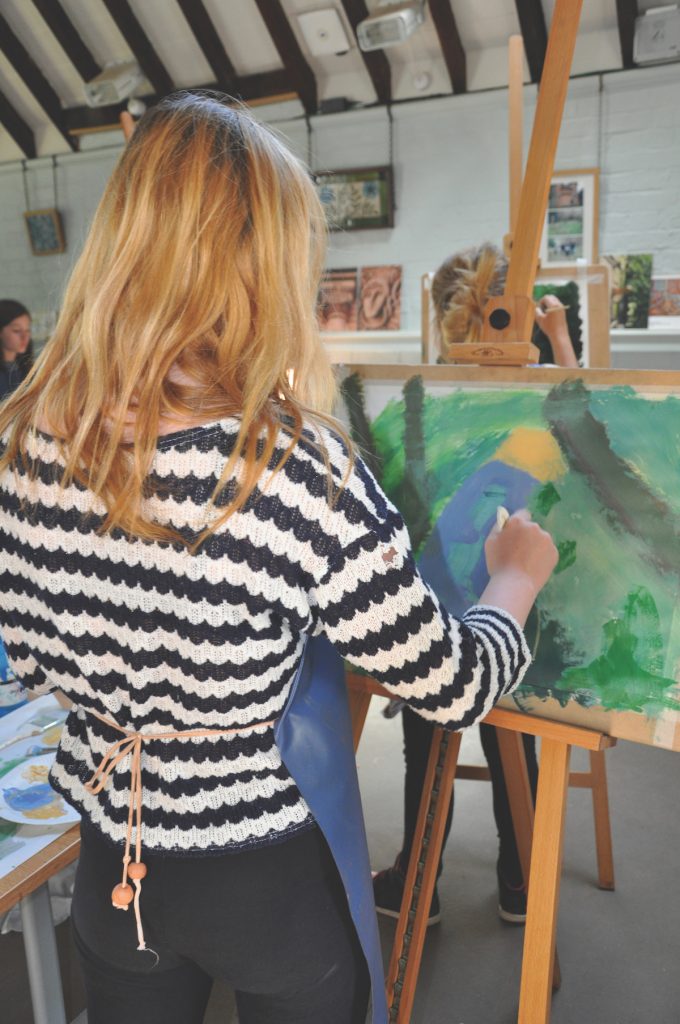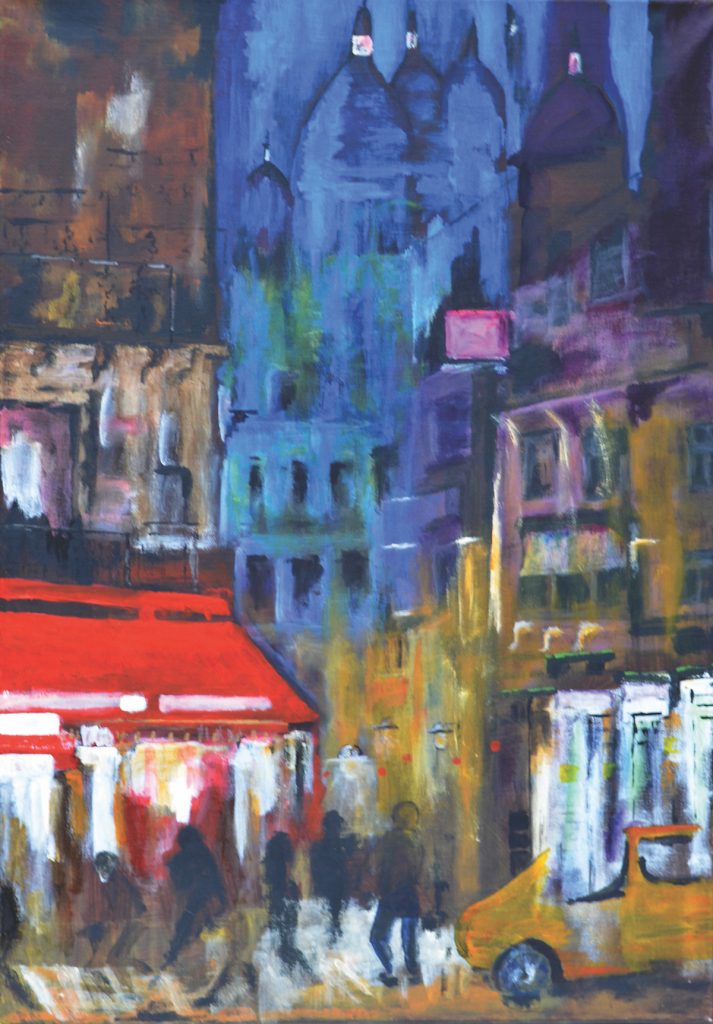 Abraham Lincoln
If given the truth, the people can be depended upon to meet any national crisis...
Abraham Lincoln
If given the truth, the people can be depended upon to meet any national crisis...
 Guildford news...
for Guildford people, brought to you by Guildford reporters - Guildford's own news service
Guildford news...
for Guildford people, brought to you by Guildford reporters - Guildford's own news service
Watts Gallery Living Up To The Vision of ‘Art for All’
Published on: 26 May, 2017
Updated on: 31 May, 2017
“Watts Gallery’s founders – the great Victorian artist George Frederic Watts and his wife, the designer Mary Watts – believed in Art for All; that art should be available to all and that, through art, there could be social change.”
So says Perdita Hunt, the considerable force behind the successful transformation of Watts Gallery from a leaky, dilapidated liability to one of the jewels in Guildford’s, Surrey’s and the South East’s cultural crown.
A report, entitled, “Art for All: Inspiring, Learning and Transforming at Watts Gallery – Artists’ Village [WGAV]”, written by Dr Helen Bowcock, identifies the different dimensions of social value delivered by the Surrey-based trust and demonstrates the commitment of the organisation to truly delivering Art for All.
Young Offenders who take part on arts activities are 18% less likely to re-offend – Cultural Learning Alliance
It describes the impact of the organisation’s Big Issues Programme working with a diverse range of people including prisoners, young offenders and people on low incomes and why the programme matters.
Students from low income families who take part in arts activities at school are three times more likely to get a degree – Cultural Learning Alliance
Dr Bowcock said: “The staff at Watts Gallery – Artists’ Village work hard to engage with other charities, with schools and local authorities to reach people who may benefit from the transformative capacity of art and who may otherwise miss out on participation in the arts.
“Surrey is a county of contrasts and there are many people living in challenging circumstances who greatly benefit from the Big Issues programme.”
Bowcock’s research has shown that the Watts Gallery Trust is delivering considerable social value within the communities that it serves.

The Star Project involves four local schools to address the educational needs of Year 9 students who are struggling in mainstream education due to low ability, confidence or disruption at home.
Some examples of Watts Gallery’s contribution are:
Working with schools to improve educational outcomes, including literacy. In 2015/16, 2459 school pupils participated in visits and workshops at the Artists’ Village. WGAV is located four miles from an area ranked in the 6% most education deprived in England;
Delivering skills and training through an active and inclusive community of over 300 volunteers. 336 people volunteer at WGAV amounting to 72 hours of voluntary effort per day. This includes students who may go on to obtain employment in the arts and people retired from employment bringing substantial professional skills;
Improving employment opportunities for young people by offering apprenticeships in marketing, estate management, catering, curating and conservation. The Curatorial Fellowship is one of only two opportunities within the museum sector to offer a two-year apprenticeship to a museum graduate or “Master’s student”;
Building confidence, motivation and skills amongst socially excluded and vulnerable groups including young people designated “At-Risk”, lone parents and adults affected by mental health issues.
Contributing to the education of women prisoners and young offenders. WGAV has had an artist in residence at HMP Send for over ten years and in 2015/2016, 424 prisoners and young offenders participated in WGAV workshops.
Perdita Hunt, Director of Watts Gallery Trust, said: “We welcome this report and are extremely grateful to Dr Helen Bowcock for undertaking this research.”
“The Artists’ Village George and Mary Watts created here in Compton stands as a testament to this. When the Wattses arrived here in 1890 they found a community in need of employment but lacking opportunities.
“Mary Watts immediately invited villagers to attend clay modelling classes, which led to their creation of Watts Chapel. Galvanised by their new skills, the Wattses helped the community to establish a social enterprise, The Compton Potters’ Arts Guild, that provided employment in the village for more than 50 years.”
“This legacy is the beating heart of Watts Gallery Trust today. Our founders’ belief in the transformative power of art is the guiding principle for our Learning Programme which, as Dr Bowcock’s report shows, is changing lives.”
“Without the generosity of our volunteers and donors, this far-reaching work would not be possible. We extend our sincere thanks to you all.”
An overriding conclusion of the report is: “…many people would miss out on participating in the arts were it not for the commitment of the Artist’s Village in its mission of Art for All.”
Recent Articles
- Guildford Institute’s Crowdfunding Project for Accessible Toilet in its New Community and Wellbeing Centre
- Letter: Guildford – Another Opportunity Missed?
- Letter: GBC’s Corporate Strategy – Where Is the Ambition?
- My Memories of John Mayall at a Ground-breaking Gig in Guildford Nearly Six Decades Ago
- Westborough HMO Plans ‘Losing the Heart of the Street’ Says Resident
- College Invests to Boost Surrey’s Economy and Close Digital Skills Gap
- Community Lottery Brings Big Wins for Local Charities
- GBC Housing Plan Promises ‘A Vibrant Urban Neighbourhood’ Near Town Centre
- Hospital Pillows ‘Shortage’ at the Royal Surrey
- Updated: Caravans Set Up Camp at Ash Manor School


Search in Site
Media Gallery
Dragon Interview: Local Artist Leaves Her Mark At One of England’s Most Historic Buildings
January 21, 2023 / No Comment / Read MoreDragon Interview: Lib Dem Planning Chair: ‘Current Policy Doesn’t Work for Local People’
January 19, 2023 / No Comment / Read MoreA3 Tunnel in Guildford ‘Necessary’ for New Homes, Says Guildford’s MP
January 10, 2023 / No Comment / Read More‘Madness’ for London Road Scheme to Go Ahead Against ‘Huge Opposition’, Says SCC Leader
January 6, 2023 / No Comment / Read MoreCouncillor’s Son Starts Campaign for More Consultation on North Street Plan
December 30, 2022 / No Comment / Read MoreCounty Council Climbs Down Over London Road Works – Further ‘Engagement’ Period Announced
December 14, 2022 / No Comment / Read MoreDragon Interview: GBC Reaction to the Government’s Expected Decision to Relax Housing Targets
December 7, 2022 / No Comment / Read MoreHow Can Our Town Centre Businesses Recover? Watch the Shop Front Debate
May 18, 2020 / No Comment / Read More












Recent Comments